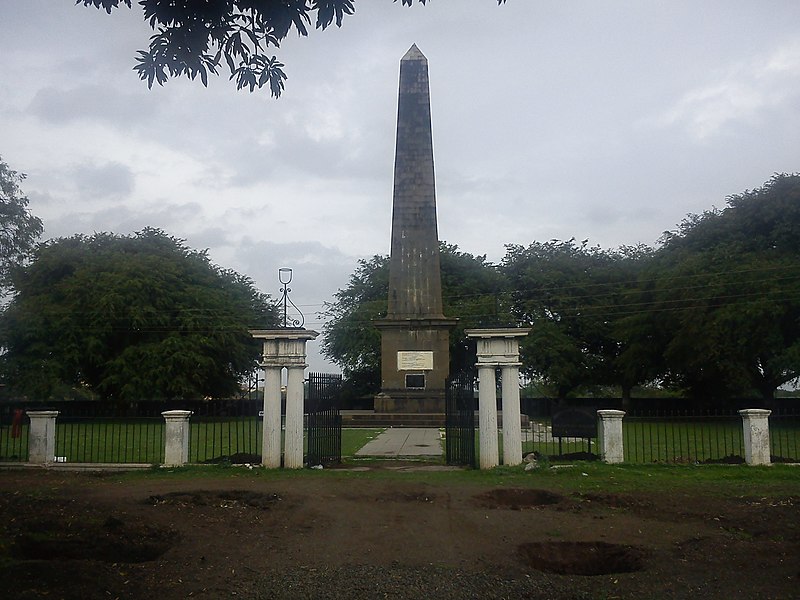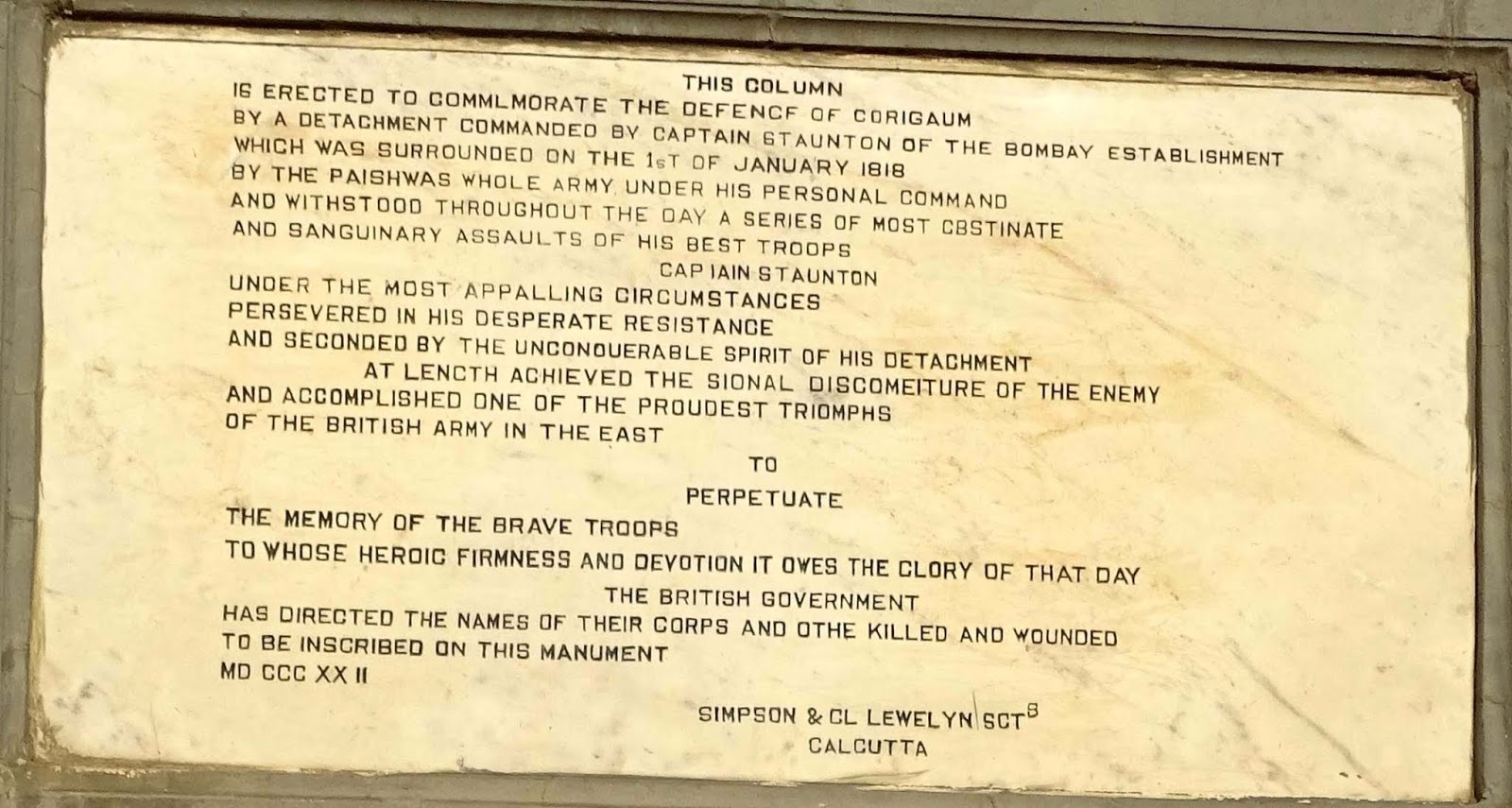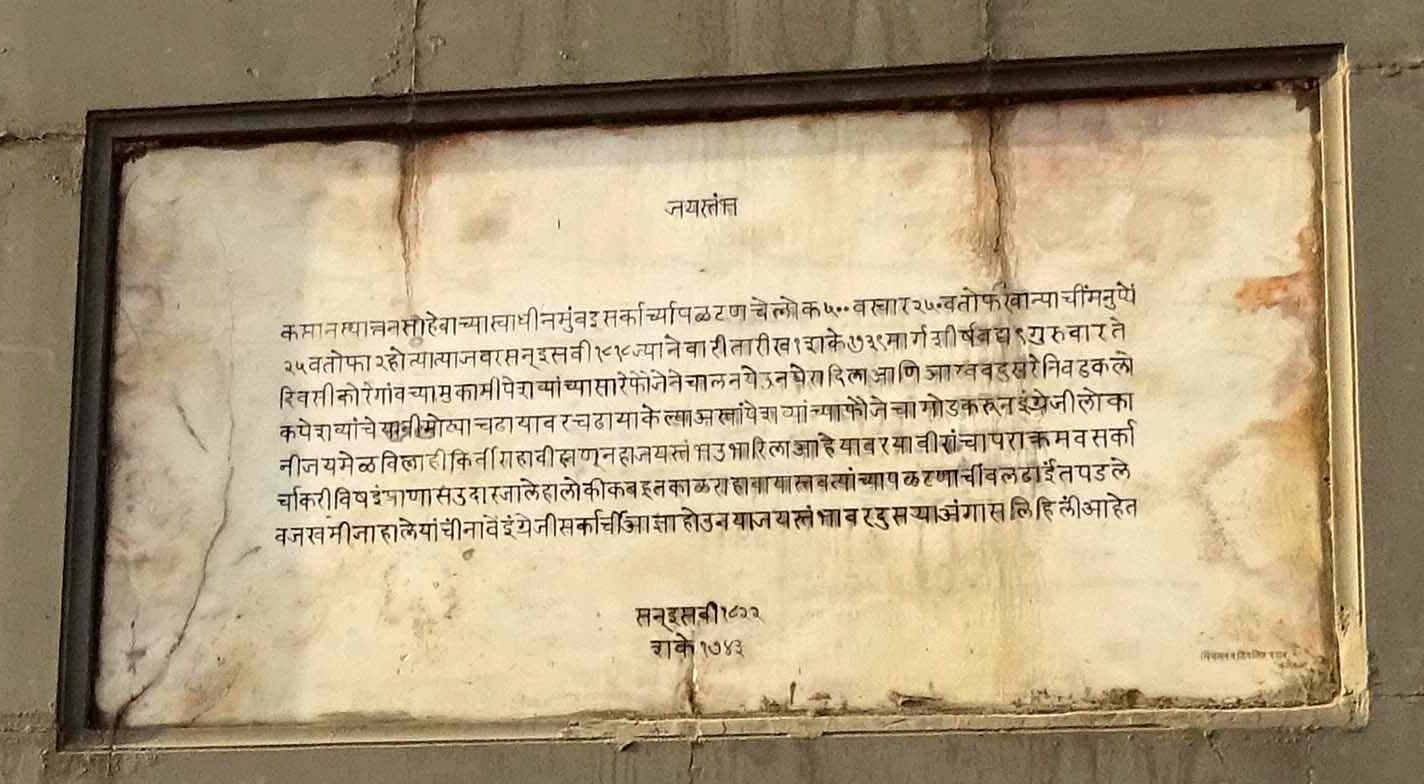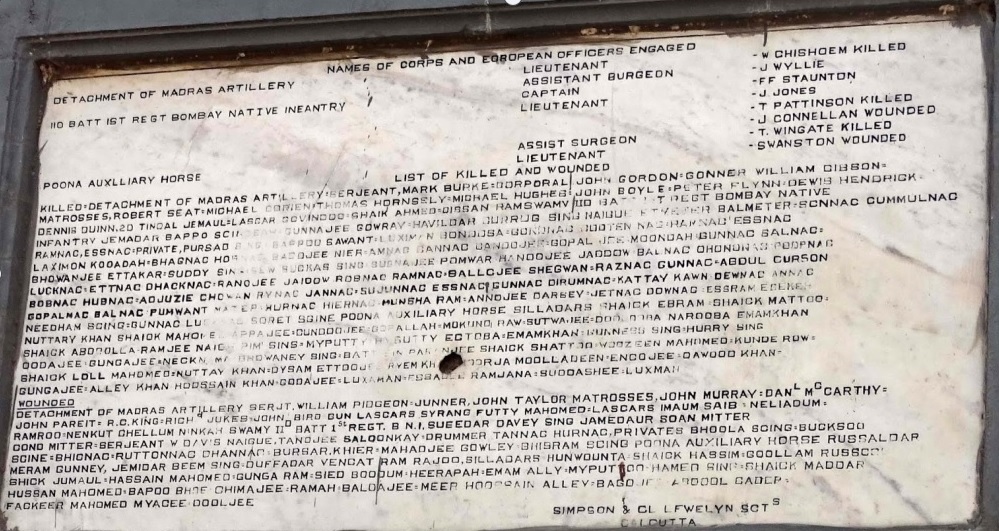
-By Sahadev K. Associate, Centre for South Indian Studies, Hyderabad
1) What is Bhima Koregaon battle?
This battle refers to a one day battle between British East India Company (BEIC) and the Maratha army led by Peshwa Baji Rao II.
2) What led to war between BEIC and the Marathas?
The Maratha confederacy (comprising the Peshwa of Pune, Scindias or Shendes of Gwalior, the Holkars of Indore and the Gaekwads of Baroda) was one of the important native empires in India. The Anglo –Maratha Wars from 1770 – 1817 had seen the British slowly gain the upper hand. Following the Maratha defeat in the Third Anglo-Maratha War of June 1817, the Peshwa was forced to flee from Pune, their capital.
3) Was the Battlle of Bhima Koregaon a decisive battle?
No. The Battle of Bhima Koregaon took place on 01 January 1818. The Maratha army of Peshwa had already left their capital Pune on 17th Nov, 1817. On that day, the British flag – Union Jack was unfurled on Pune fort. A series of incidents along with this battle led to the downfall of the Maratha Empire and the complete colonisation of India by the British. Chhatrapati Pratapsinh Maharaj and Peshwa Bajirao II both were exiled to Benares and Bithoor respectively. The British Rule in India was a period of darkness that lasted for 150 years. In these 150 years, millions died due to barbaric British policies.
4) Where did the Maratha army led by Peshwa Baji Rao II go after leaving Pune ?
Peshwa Baji Rao II proceeded towards Satara where he collected a strong force of about 28,000 men at Satara comprising 20,000 cavalry and 8,000 infantry), to attack Pune, which was by now under the control of the British East India Company (BEIC).
5) Who is a Peshwa ?
The office of Prime Minister under the Maratha Empire was known as a Peshwa.
6) What led to the Battle of Bhima Koregaon?
The Maratha army of Peshwa Baji Rao II was pursued by a large British force under General Smith and Pune was placed under a garrison under Colonel Burr. As the Peshwa escaped from his pursuers, he retraced his steps and moved back towards Pune. Colonel Burr hearing of the arrival of the Marathas asked for help from the Company’s troops stationed at Shirur. A contingent of troops under the command of Lt Francis Staunton left Shirur to reinforce the Poona Garrison. Marching all night, they reached the village of Talegaon and at 10 a.m. on 1st January, 1818, they spotted the advance guard of the Peshwa Army across the Bhima River. Thus BK battle was a chance encounter between BEIC army and the Maratha army.
7) Which units of British East India Company’s army participated in the Bhima Koregaon Battle?
The total strength of the BEIC army was 824. 24 European Gunners, around 500 troopers of the 2nd Battalion of the Bombay Native Infantry, 300 horsemen of Poona Auxiliary Horse (later Poona Horse – one of India’s most illustrious Armoured Regiments) along with a contingent of artillery with two six-pounder guns, under the captainship of Francis Staunton. The British army comprised of Europeans, Muslims, Marathas, Mahars, Rajputs, and few Jews.
8) Which units of the Maratha army participated in the Bhima Koregaon Battle?
The total strength of the Maratha army which participated in the BK battle was 1,800. Three units of Maratha army comprising of
Arabs (Muslims) – 600
Gosains – 600
Marathas of all castes – 600
The three attack troops of the Peshwa detachment were led by Bapu Gokhale, Appa Desai and Trimbakji Dengle.
9) How long was the BK battle fought?
The battle of BK was fought for one day only, from about 10.00 am in the morning till 9 p.m. in the night.
10) What were the casualties of the BK battle?
Out of the 834 BEIC troops that fought in the Battle of Bhima-Koregaon, 275 were killed, wounded or missing. The dead included two European Officers – Assistant Surgeon Wingate and Lieutenant Chisolm, while Lieutenant Pattison died, later, of his wounds in Shirur. Among the infantrymen, 50 were killed and 105 wounded. Among the artillery, 12 were killed and 8 wounded. The dead BEIC soldiers of Indian origin included 16 Marathas, 22 Mahars, and 8 Rajputs, 2 Muslims and 2 Jews and 11 European soldiers.
Maratha army’s casualties were estimated at 500-600 killed or wounded.
11) Did any of the two sides claim victory?
No. By night the fighting had ceased and by day break the Maratha army had left the place. No official British record has called this battle a ‘victory’. Even the inscription on the pillar at Bhima Koregaon says that it was erected to commemorate the ‘defence of Corium’
12) Who erected the Bhima Koregaon Memorial pillar?
British East India Company.
13) When was the memorial erected?
On 6 July, 1818, Elphinstone in a letter to Warren Hastings, then governor-general, recommended the building of a war memorial in memory of the soldiers who lost their lives in the Bhima Koregaon battle. Accordingly, John Wiley, assistant surgeon of the Madras Artillery, was given the task of designing the memorial. It was finally built in 1822 and carried the names of all those who died or were injured in the battle.
14) What does the Bhima Koregaon Memorial pillar signify?
The pillar signifies “One of the proudest triumphs of the British Army in the East”. This victory pillar is a symbol of the victory of a foreign power against a local ruler.
15) What is inscribed on the BK Memorial pillar?
As soon as one enters the Bhima-Koregaon Memorial Complex, one sees two stone inscriptions – one placed by the BEIC giving a brief of the Battle of Bhima-Koregaon and the other more recent one giving a later “Roll of Honour” of the Poona Horse in various Battles.

On 2 sides of the memorial a narration of the battle in English together with the names of the Corps and list of European officers engaged and men killed or wounded in the Battle of Bhima Koregaon – the detachment of Madras Artillery, 110 Batt 1st Regt. Bombay Native Infantry and the Poona Auxiliary Horse. On two other sides of the memorial, details of the battle and the names of those who were killed/ wounded are inscribed in Marathi language.

A close up of the names of European officers inscribed on memorial.

References:
1) A History of the Mahrattas by James Grant Duff. Volume III published in 1918 by R Cambray & Sons.
2)https://gazetteers.maharashtra.gov.in/cultural.maharashtra.gov.in/english/gazetteer/Poona%20District/places_k.html
3) https://exclusivecoins.blogspot.com/2019/04/960-did-you-know-series-45-part-v-bhima.html
4) https://soldier2ndlife.com/card/the-victory-pillar-at-bhima-koregaon

More Stories
‘Tippu NijaSwarupam’ Book Launch event organised in Hyderabad
Muslim cleric from AP calls for assassination of PM Modi and Amit Shah
Kerala Church Rebels Against New Worship Method Mandated by Pope